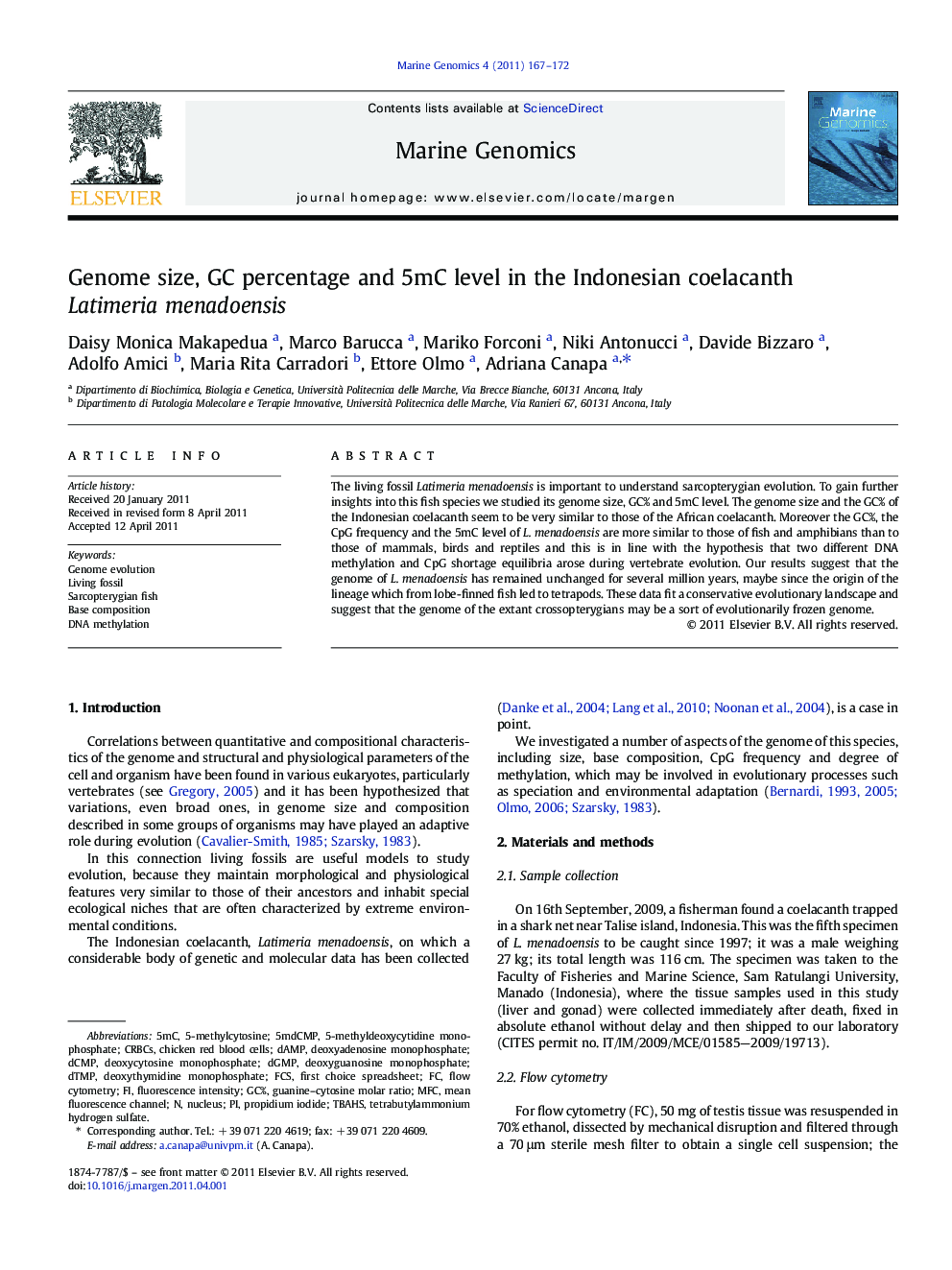| Article ID | Journal | Published Year | Pages | File Type |
|---|---|---|---|---|
| 2058309 | Marine Genomics | 2011 | 6 Pages |
The living fossil Latimeria menadoensis is important to understand sarcopterygian evolution. To gain further insights into this fish species we studied its genome size, GC% and 5mC level. The genome size and the GC% of the Indonesian coelacanth seem to be very similar to those of the African coelacanth. Moreover the GC%, the CpG frequency and the 5mC level of L. menadoensis are more similar to those of fish and amphibians than to those of mammals, birds and reptiles and this is in line with the hypothesis that two different DNA methylation and CpG shortage equilibria arose during vertebrate evolution. Our results suggest that the genome of L. menadoensis has remained unchanged for several million years, maybe since the origin of the lineage which from lobe-finned fish led to tetrapods. These data fit a conservative evolutionary landscape and suggest that the genome of the extant crossopterygians may be a sort of evolutionarily frozen genome.
Research highlights► We determined the genome size, the GC content and 5mC level in Latimeria menadoensis. ► The genome size of the African and Indonesian coelacanths is fairly similar. ► GC% and 5mC remained unchanged for several millions years. ► The genome of extant crossopterygian may be a sort of evolutionary frozen genome.
